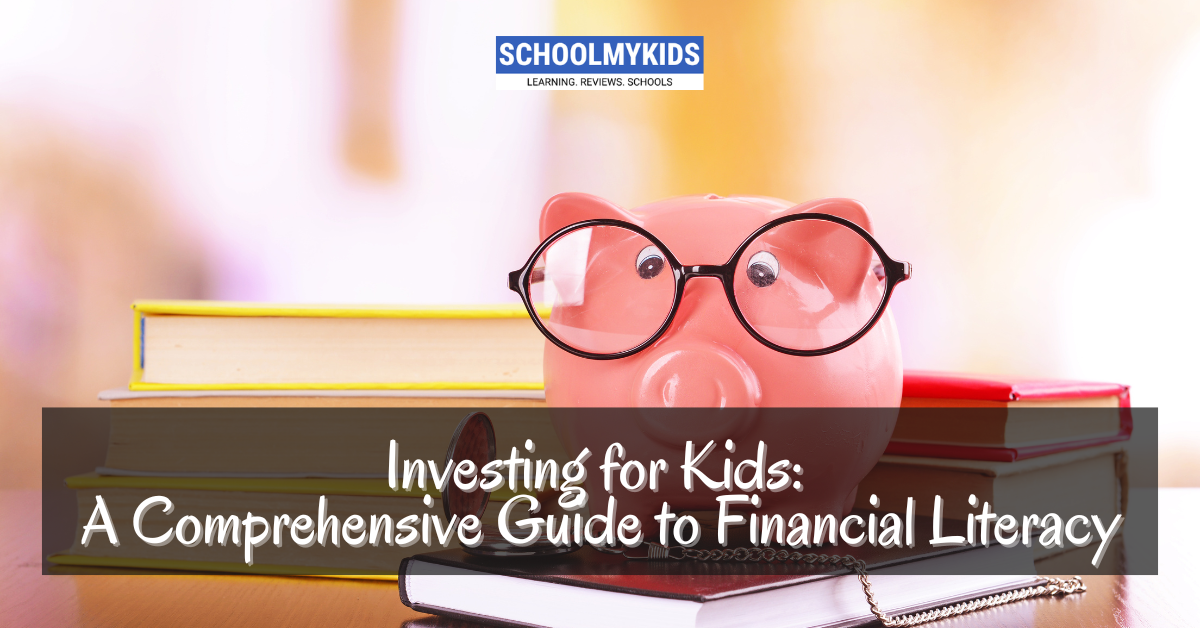In today’s fast-paced and financially complex world, teaching kids about investing is more important than ever. Early financial education can lay a strong foundation for future financial success, helping children understand the value of money, the importance of saving, and the benefits of investing. This guide will explore the basics of investing for kids, providing practical tips and strategies to make the concept engaging and accessible.
Why Teach Kids About Investing?
Understanding investing is a crucial component of financial literacy. Here are several reasons why it’s beneficial to teach kids about investing:
Building Financial Literacy
Investing teaches kids the fundamentals of financial literacy, including concepts like interest, risk, and diversification. These skills are essential for managing money effectively as adults.
Encouraging Long-Term Thinking
Investing promotes long-term thinking. It helps kids understand that saving and investing today can lead to financial rewards in the future.
Instilling Good Habits
Early exposure to investing can instill good financial habits. Kids who learn to save and invest are more likely to continue these practices into adulthood.
Empowering Financial Independence
Knowledge of investing empowers kids to make informed financial decisions, fostering a sense of independence and responsibility.
Getting Started with Investing
Introducing kids to investing can be a fun and educational experience. Here are some steps to get started:
1. Start with the Basics
Begin by explaining basic financial concepts such as money, saving, and interest. Use simple language and relatable examples to make these concepts easy to understand.
2. Use Real-Life Examples
Use real-life examples to explain how investing works. For instance, talk about how saving money in a bank earns interest or how buying shares in a company can lead to profits if the company does well.
3. Leverage Educational Tools
There are numerous educational tools and resources available to teach kids about investing. Books, online courses, and interactive apps can make learning about finance fun and engaging.
4. Open a Custodial Account
Consider opening a custodial account for your child. These accounts allow you to manage investments on behalf of your child until they reach adulthood, providing a practical way to learn about investing.
5. Set Financial Goals
Help your child set financial goals. Whether it’s saving for a new toy or a college fund, having clear goals can motivate them to learn and practice good financial habits.
Key Investment Concepts for Kids
Here are some key investment concepts that are essential for kids to understand:
Savings vs. Investing
Explain the difference between saving and investing. Saving involves putting money aside in a safe place, such as a savings account, while investing involves purchasing assets with the potential for higher returns, such as stocks or bonds.
Compound Interest
Teach kids about compound interest, which is the interest earned on both the initial principal and the interest already earned. This concept can be illustrated with simple math or through online calculators that show how investments grow over time.
Risk and Return
Discuss the relationship between risk and return. Higher potential returns often come with higher risks. It’s important for kids to understand that all investments carry some level of risk, and diversification can help manage that risk.
Diversification
Diversification involves spreading investments across different assets to reduce risk. Explain how investing in a variety of assets can help protect against losses in any single investment.
Practical Investment Options for Kids
There are several practical investment options that are suitable for children. Here are a few to consider:
Savings Accounts
A savings account is a great starting point. It introduces kids to the concept of earning interest on their savings and provides a safe place to store their money.
Certificates of Deposit (CDs)
CDs offer a higher interest rate than regular savings accounts in exchange for keeping the money deposited for a fixed term. This can teach kids about the benefits of longer-term saving.
Stocks
Buying shares in a company can be an exciting way for kids to learn about investing. Start with companies they are familiar with, such as those that produce their favorite toys or foods.
Mutual Funds and ETFs
Mutual funds and exchange-traded funds (ETFs) allow kids to invest in a diversified portfolio of stocks and bonds. These investment vehicles are managed by professionals and can be a good way to introduce diversification.
Bonds
Bonds are loans made to corporations or governments that pay interest over time. They are generally less risky than stocks and can provide a steady income stream.
Teaching Strategies for Parents and Educators
Effective teaching strategies can make learning about investing enjoyable and impactful for kids. Here are some approaches:
Hands-On Learning
Engage kids in hands-on learning activities, such as tracking the stock market, managing a mock investment portfolio, or visiting a bank. Practical experiences make abstract concepts more tangible.
Storytelling
Use storytelling to explain financial concepts. Stories about how people have used investing to achieve their goals can be inspiring and relatable.
Games and Simulations
There are many games and simulations designed to teach kids about investing. These interactive tools can make learning fun and reinforce important concepts.
Regular Discussions
Have regular discussions about money and investing. Encourage your child to ask questions and express their thoughts. This open communication fosters a deeper understanding and interest in finance.
Overcoming Common Challenges
Teaching kids about investing can come with challenges. Here are some common issues and how to address them:
Lack of Interest
Kids may not initially be interested in investing. Make the subject engaging by relating it to their interests and using interactive tools and games.
Complexity of Concepts
Financial concepts can be complex. Break them down into simple, easy-to-understand parts and use real-life examples to illustrate them.
Short Attention Spans
Kids often have short attention spans. Keep lessons short and engaging, and gradually build on their knowledge over time.
Conclusion
Teaching kids about investing is a valuable investment in their future. By introducing them to financial concepts early on, you can help them develop the skills and habits needed for long-term financial success.
Whether through savings accounts, stocks, or educational games, there are many ways to make learning about investing fun and engaging. Empower your child with the knowledge and tools they need to navigate the financial world confidently and responsibly.








Be the first one to comment on this story.